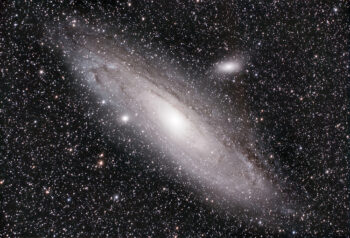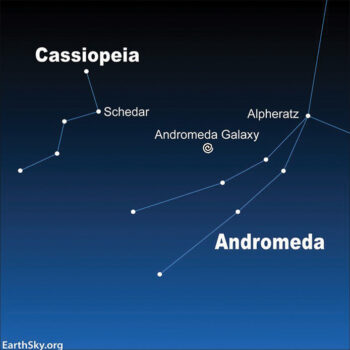
 Ben Eisenstein
Ben Eisenstein
I began my love of astronomy in high school when I built my own telescope. Fast forward to retirement. My wife Nancy and I were looking for a place in the Southwest where dark night skies existed. SaddleBrooke Ranch was a perfect fit.
Those of us who came to SaddleBrooke Ranch from the city are awed by views of the Milky Way and other celestial objects visible from our yards. The dark night sky at the Ranch, thanks to our lighting rules and distance from Tucson, is also ideal for stargazing with binoculars. You can take your sky watching to the next level and have a close-up view of star clusters, nebulae, and planets.
Start with the easy objects, like the moon. Early in the lunar month, look at not just the sunlit crescent, but also the dark areas lit by earthshine. As the phases of the moon progress, observe the terminator, the line between the lit and unlit areas of the moon, and you can see the craters and mountain ranges.
The planets are also worth examining in October. Venus will rise 40 minutes before sunrise but disappear in its glare by the end of the month. Jupiter is a great target and if you hold the binoculars steady, close to your chest, you should be able to spot the four giant moons Galileo spotted with one of the first telescopes ever made. Saturn, famous for its ring, is well placed in the evening sky, and should be visible as a bright football shape through the binoculars.
Just sweep your binoculars across various constellations near the Milky Way, like Cassiopeia and be awed by what you see. Not familiar with the constellations? Locating galaxies and other deep sky objects will require either the use of star charts or the assistance of an astronomy app such as Sky Safari or Stellarium.
One of the finest jewels of the sky in fall is the Andromeda Galaxy. The nearest large galaxy to our own, seen with the naked eye as a small blurry cloud. It is best to view this on a dark moonless night. To find it, look for the bright star Schedar in Cassiopeia, which points to this galaxy, 150,000 light years away with 300 billion stars!
The constellation of Andromeda has many double stars to observe. The best is Almach, located in the Great Square of Pegasus overhead. From the northeast corner, find three bright stars in a long line. Almach is the third and easternmost of these stars. These stars have a distinct color contrast, primary is orange-blue and the secondary is blue.
Tip: To steady binoculars, hold your arms close to your chest and hold the front of the barrels.
All the sights above and many more are visible with your handheld optics, a pair of binoculars!
We invite you to join the SBR Astronomy Club by requesting membership on Groupworks or by contacting Ben directly.
